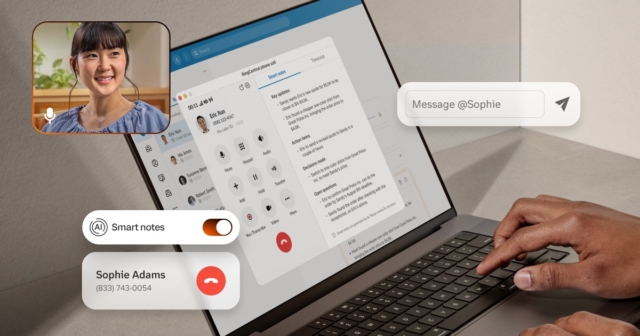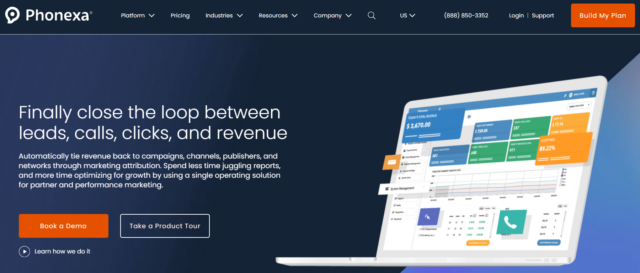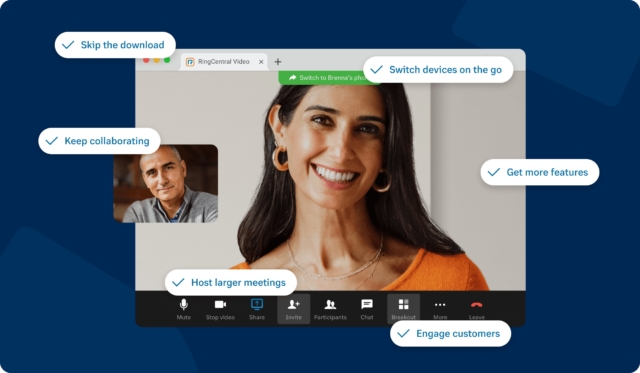Communication is one of the cornerstones of efficient modern business and can mean the difference between survival and success. A good business phone system can keep you in touch with customers as well as suppliers and is essential in today’s thriving marketplace. How you choose to run your business communication could define how people perceive your brand.
Telephone communication has come a long way since Alexander Graham Bell invented the first of its kind in 1876. The digital era ushered in a new age of innovation that offers everything from video conferencing to instant messaging.
One of the most significant of those innovations is Voice over Internet Protocol (VoIP) phones. But just what are VoIP phones and what benefits do they offer your business? What features should you be looking for, and, in a crowded market, how do you decide which VoIP phone service system best meets your needs? To help you out we’ve examined 17 of the best VoIP software options to help you decide.
What is VoIP Software?

VoIP is sometimes called Internet Protocol (IP) or voice over IP telephony. It is a type of software that ‘creates’ a visual communications network where users make calls using an internet or Wi-Fi connection rather than the traditional, and restrictive, analog public switched telephone network (PSTN) that used to be the norm.
While we tend to think of VoIP as a very modern invention, its origins actually date back to the 1920s. This was when AT&T and the Western Electric company jointly formed the Bell Laboratory. Among the many innovations to come out of the Bell Laboratory was the vocoder, as used in the SIGSALY system used to send secret messages in WWII.
Over the coming decades, electronic communication evolved, from the Arpanet in 1969 to the introduction of wideband audio codecs in 1988. The first ever VoIP system, albeit a rudimentary one, appeared between 1989 and 1991. The first form of VoIP was the RASCAL system, developed by Brian Wiles to allow the sending of voice messages over ethernet networks.
The next stage came in 1991 with the development of NetFone when John Walker wrote a scheme that reduced the speeds needed to run voice applications from 64Kb/s to just 32Kb/s. NetFone is regarded as the first software-based VoIP system but is very basic compared to what we have today.
1995 saw the first commercial VoIP solution released. VocalTec Communications released VocalTec Internet Phone, a solution that needed a 486 computer processor, 8MB of RAM, a 16-bit soundcard, and either an SLLP or PPP connection. In today’s digital world, that sounds primitive and slow, but in 1995, it was cutting-edge technology.
2003 saw the launch of Skype, one of the most recognisable names in the world of communications. While initially audio only, it soon offered the ability to make video calls too. By the time we reached 2012, the range of VoIP services on offer was growing at around 17% annually. Between 2011 and 2012, Session Initiation Protocol (SIP) trunking saw a massive 83% in growth.
By the time we reached 2015, a lot of businesses were changing to VoIP systems. There was also a change by phone companies from using the traditional copper wire of PSTN systems to the fibre optic cabling we know today. With a market size of around $30 billion in 2020, the VoIP industry is expected to grow between 2021 and 2027 at a CAGR of 15%.
As with any healthy market, competition has become fierce with multiple companies vying for your business and offering different systems for different needs. If you are still operating on a traditional PSTN system, or have outdated VoIP telephony, and looking to make the switch, below we examine the types and benefits of the different types of VoIP software available on the market today.
What types of VoIP are available?
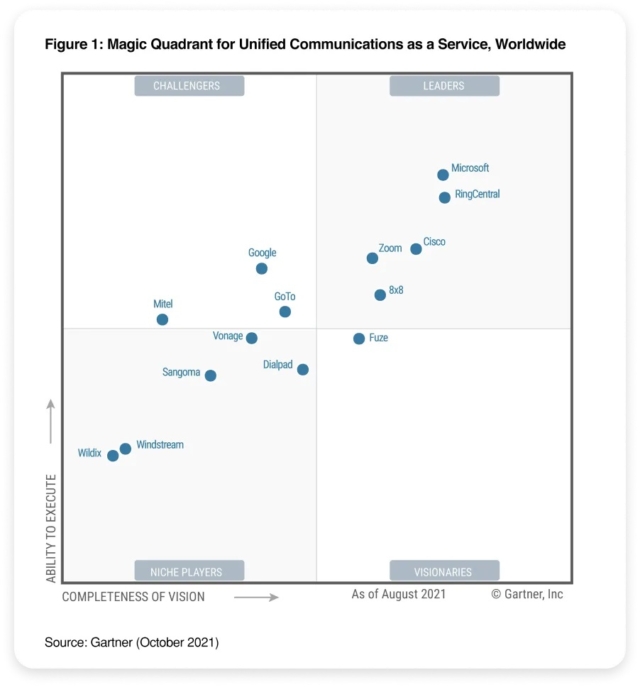
1. Cloud
Cloud VoIP is hosted by a third-party provider and is very cost-effective for businesses as there is no need for on-premises dedicated hardware. A cloud-based communication solution enables your business to make calls via the internet so a stable connection and good bandwidth is always needed. In most cases, your provider will offer advanced features such as analytics, call routing, and other features.
2. On-premises
The main, and obvious, difference to cloud-based VoIP is that an on-premises system involves dedicated hardware installed at the location of your choice. While this gives you increased security and control of your data, it comes with the higher costs involved in installation and maintenance. It can also present hurdles if you wish to scale upwards as that will involve the purchase of extra hardware and the increased costs involved in configuration and maintenance.
8 Benefits of VoIP Software
1. Low Cost
This is the benefit that will have your CFO smiling all the way to the bank: VoIP can offer significant savings when compared to a traditional PSTN system. While savings can vary according to the system you use, the size of your business, and other factors, they can range from 30-50% on average. If your organisation makes a lot of phone calls, that can make a huge difference to your bottom line.
2. Mobility
In modern business, you are less tied to your office desk than you used to be. You could be working remotely or following a hybrid model, or you could be on the road visiting clients and potential clients. VoIP offers a flexibility and mobility that traditional phone systems lack. You can link your smart or mobile phones to your office number, thus making you contactable no matter where you are (as long as you have an internet connection).
3. Advanced Features
Think of your VoIP phone as much more than a phone; it’s a modern communications device. That means you have advanced features that go way beyond what your old desk phone offered. This is one of the major benefits that businesses gain and some of those features includes:
- Video calls. With most VoIP systems offering video conferencing, you can join meetings no matter where you are and without having to use a desktop or laptop. There is no loss in quality either with most VoIP service providers offering HD quality video connections.
- Conference calls. Business needs dictate that there are occasions when more than two people need to discuss an issue. As long as you have a stable internet connection, multiple callers can join a call from anywhere in the world, increasing efficiency and productivity and boosting collaboration.
- Call queuing. Everyone experiences busy periods in their business and VoIP can help handle them. Automated distribution of calls means that customers wait less time and that calls are directed to someone who can best handle the call.
- Integrations. The modern organisation tends to use multiple tools and apps such as CRM (customer relationship management). Jumping between these tools can be both time-consuming and annoying. A good VoIP system will offer simple integration with those important tools, meaning workflows are smoother and more efficient.
- SMS functions. There will be times where you don’t need to speak to a customer or colleague and a simple text message will suffice. With VoIP, you can send an SMS message directly from your mobile devices or via a desktop application.
- Analytics. Depending on the nature of your business, you want to be able to access data on how your employees are spending their time or how calls are being handled. Embedded analytics with most VoIP systems makes it easy for you to access any pertinent data and analyse it to make actionable decisions.
4. Omnichannel communication
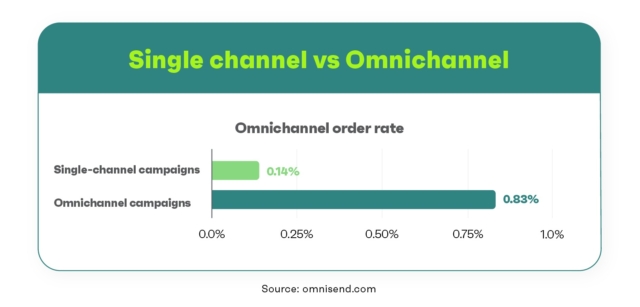
Customer experience and satisfaction lies at the forefront of many companies’ strategies. That means recognising that your customer may choose different channels to communicate with you and you need to be ready to use those same channels to communicate with them. A good VoIP system lets you choose the best channel for a particular task, from traditional voice calls through live chat, video calls, text messaging, and other options.
5. Better Productivity
Better productivity means higher profits and happier customers. VoIP unifies your communications so that your employees get more done. With the ability to integrate with other tools and apps (such as accessing voicemail transcripts), staff can deal with calls more efficiently and can use information at their fingertips to solve issues quicker. VoIP takes your phone system and turns it into an efficient communications platform.
6. Overcome Geographical Limitations
The problem with traditional phone systems, and even some mobile providers, is that you were often limited in using those devices if in different regions or countries. As VoIP operates via the internet, it means you can use your VoIP phone no matter where you are in the world. As long as you have internet access, then you can use your VoIP device anywhere.
7. Instant Collaboration
With all the features of a VoIP system, it means you can have people collaborating on projects instantly. With video call features and file sharing options, it doesn’t matter where team members are located, they can collaborate on work projects. This is especially useful when you have employees who are working remotely.
8. Enhanced Customer Service Centricity
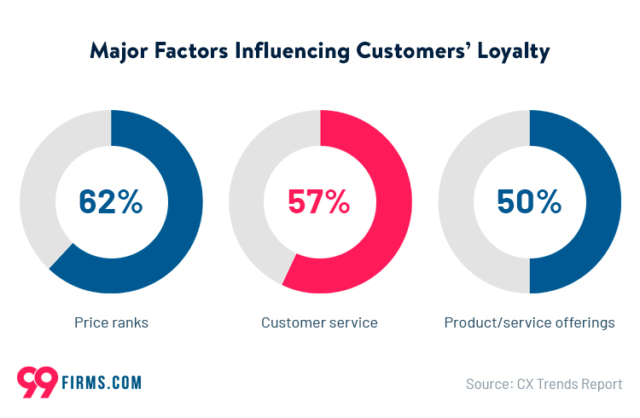
For most businesses, customers are their lifeblood and providing the best possible levels of customer service is paramount. With VoIP, customer service is front and centre. Good IVR (interactive voice recognition) can ensure customers are directed to appropriate people or teams. It also offers your customer shorter waiting times, better quality of calls, and quicker responses to their queries.
Important Features of VoIP Software to Take Note of
So, you have read the benefits that can be gained by implementing VoIP and you are moving towards a positive decision. With such a crowded market, what features should you be looking for when ‘shopping’ for a VoIP system?
1. Automation (ACD and IVR)
Automation is an essential feature of many business systems today and VoIP is no different. Automation can carry out mundane tasks as well as streamlining workflows and processes. With VoIP, two of the most important automated features to look for are ACD (automatic call distribution) and IVR (interactive voice response).
If you operate a call centre or have high volumes of incoming calls, ACD is crucial to business efficiency. Calls are distributed to individuals according to rules you set, such as the next available agent or to specialist teams. IVR helps customers navigate your system so they are directed to the right place or lets them access self-service options such as paying bills or checking their account.
2. Visual Voicemail
If you receive multiple voicemails, it can be frustrating sorting through them and new voicemails can often be ‘lost’ in the crowd. VoIP’s visual voicemail option provides a visual interface that makes it easier to search through your voicemails and to find newer ones. This can help speed up your employee’s response to such messages, meaning greater productivity and better customer service.
3. Call Recording and Transcription
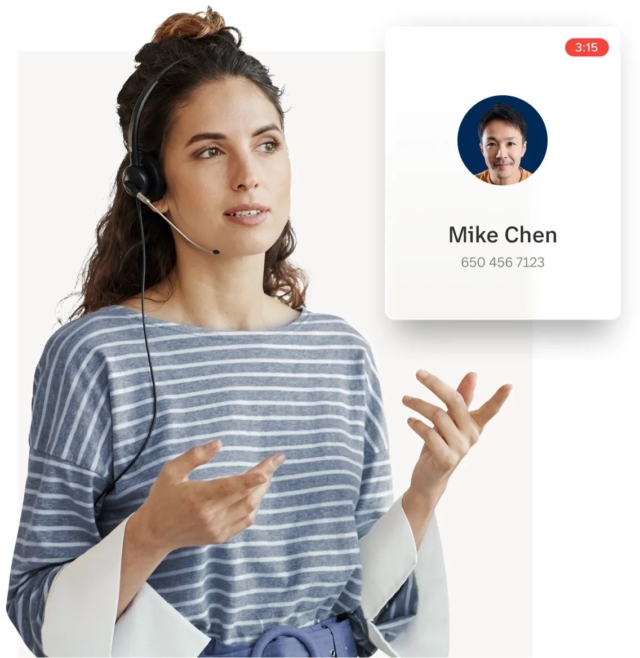
Call Recording can be a useful tool on a number of levels. Within call centre environments, it can be essential when it comes to training new agents or monitoring performance of existing agents. It can also be very useful when it comes to ensuring compliance with any relevant laws and regulations as well as for settling disputes.
Call transcription lets voicemails be sent to your email account in text format. You still have access to the audio recording but a transcribed version provides you with any facts and figures in written form so you can refer to it easily rather than having to relisten to the actual voicemails. If you receive a lot of voicemails, it also saves you from having to go through multiple recordings.
4. Advanced Call Handling Features
If you are dealing with a large number of calls, then you want as much control as possible over how calls are managed. An efficient VoIP solution offers advanced features as to how to handle those calls so that call quality is at a high level and that customers are dealt with efficiently. Depending on the system, that can include putting calls on hold or prioritising calls (in cases where you have a VIP list of customers).
5. Conferencing
Many businesses see voice and video conferencing as an essential feature for their communications system. You may have staff working remotely or you may have offices in different geographical locations. Being able to bring those staff together on a conference calls fosters better teamwork and collaborative practice so that tasks and projects are dealt with more efficiently.
6. Collaboration Tools
Collaboration is an essential aspect of many modern organisations. As with conferencing, team members may be in different locations but need to be able to share files, images, and other information. Good VoIP systems offer a range of tools (or easy integration of collaborative tools) so that people can share such info easily.
Collaboration goes beyond sharing, however, it also includes the ability to annotate files during video meetings, recording any calls or video conferences so they can be referred to later, and also creating a useful library of information. For example, you could choose to collate material from presentations for use in webinars. These tools should also be scalable according to your needs.
7. Smartphone Integration
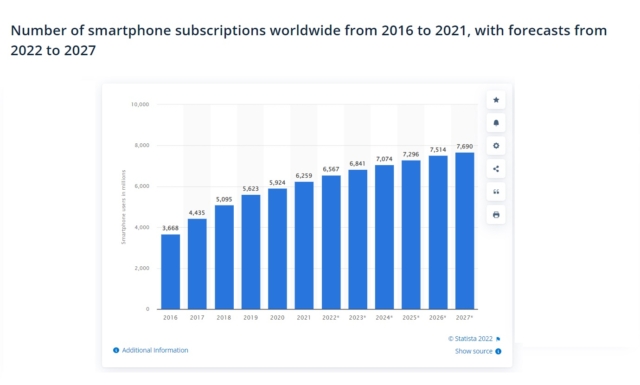
There are two main operating systems for smartphones; Android and iOS. However, there are thousands of models using these operating systems. When choosing a VoIP solution, you want one that offers simple integration with smartphones so that your employees can easily use their particular model with your new VoIP system.
8. Third-Party Integration
As already mentioned, you likely use multiple tools or apps in your daily business activities. The most obvious example of this is CRM (customer relationship management) integration that allows your agents to access customer information, thus allowing them to provide better (and quicker) customer service. With so many diverse third-party tools in use, a VoIP solution that does not allow for simple integration is probably not worth considering.
18 Best VoIP Softwares
You should now be another step forward in the decision process. You can see the benefits of a VoIP system over a traditional PSTN system and you can also identify which particular features would be best suited to your organisation. It’s now time to take a look at some of the best VoIP software currently available so you can narrow down your choices.
1. RingCentral
RingCentral (yes, us!) is the market leader in the UCaaS (unified communications as a service) industry with a 20% share of the market in 2020. We offer businesses more functionality than any other available solution and RingCentral MVP (message, video, and phone) illustrates how far our service has evolved from our early days as a basic provider of voice call solutions.
We offer four different pricing tiers with a wide range of features to suit any size of organisation. Our second tier – Standard – is where the majority of integrations kick in, including Microsoft 365, Google Workplace, and Slack. As well as being easy to set up (and to administer), we also offer easy scalability, meaning it’s simple for the system to grow in tandem with your business growth and lets you easily streamline workflows.
RingCentral MVP offers clients a VoIP cloud PBX (that as with many other VoIP solutions, is based on session initiation protocol – SIP). While RC supports most desktop SIP phones, with the increasing number of people working remotely, businesses may find it easier and more efficient to use the RC softphone apps that can be used on Android, Mac OS, iOS, and Windows.
One of the main focuses of RC MVP is our video calling and conferencing abilities, and we have also recently introduced a beta webinar feature too. RC also offers high quality contact centre solutions, both inbound and outbound. It includes an advanced dialer as well as detailed real-time analytics that allow managers to keep a close eye on performance, metrics, and KPIs.
RingCentral MVP is perhaps the most advanced solution on the market, which explains why it is used by so many enterprise-level organisations. Having moved away from our previous dependence on Zoom, our now independent video software offers users features that include several formats of screen sharing, closed captions, meeting notifications, and audio transcription.
Something that really makes RC MVP stand out is our advanced use of AI. By combining AI-powered systems with NLP (natural language processing) and ML (machine learning), RC has taken unified communications into the future. From transcribing entire meetings (including identifying who was speaking) to analysing speech during calls, these features enhance your communications as well as your business’s performance.
Features:
- Voicemail Transcription: Yes
- Easy setup and admin: Yes
- Auto attendant/receptionist: Yes
- Software Phone: Yes
- SMS: Yes
- Automatic Call-Back: Yes
- Caller id: Yes
- Call Monitoring: Yes
- Live coaching: Yes
- Unlimited calling: Yes but only for US and Canada just now.
- Omnichannel options: Yes
- Call recording: Yes
- Voicemail to Email: Yes
- Call transfer: Yes
- Call forwarding: Yes
- Call history access: Yes
- Freephone Option: Yes
- International phone numbers: Yes
- Multi-level IVR: Yes
- High encryption levels and data security: Yes
- Video Conferencing: Yes
- Free version: Trial only
2. Phonexa
Phonexa is a PBX (private branch exchange) VoIP solution that enables cloud-based call flow management without on-premises telephony hardware. The Cloud PBX software complements two other Phonexa’s proprietary products – LMS Sync and Call Logic – creating a comprehensive ecosystem for web and call leads, including inbound and outbound calls.
Through its eight products working in sync, Phonexa gives you full control over call conversations while lowering usage fees. The call scoring feature makes it possible to rate calls and analyze the performance of your sales reps, whereas the cloud-based nature of the system makes you available for your callers around the clock, no matter what.
The setup itself incurs less expenses than most other cloud systems – and hundreds of times less than on-premise systems – and the maintenance fees are minimal. You pay for what you get and not more than that, and you can customise your plan to get the best bang for your buck.
Features:
- Voicemail Transcription: Yes
- Easy setup and admin: Yes
- Software Phone: Yes
- Integration: Yes
- SMS: Yes
- Call Monitoring: Yes
- Omnichannel options: Yes
- Call recording: Yes
- Voicemail to Email: Yes
3. Ooma
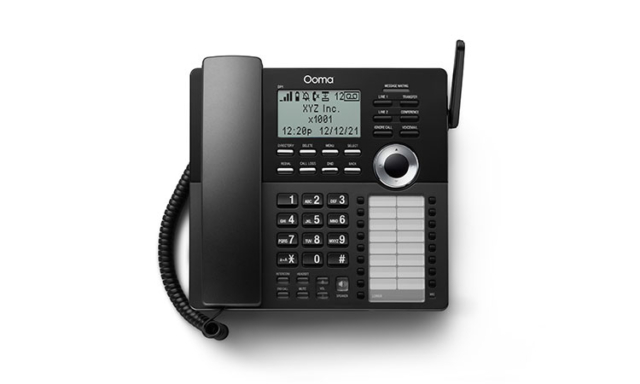
Ooma office is a cloud-based VoIP solution that is best suited to smaller businesses and home offices. It offers local and international calls as well as a virtual assistant that can help remind you about and carry out daily tasks. A big advantage of Ooma is that you do not need to sign up to a fixed contract and can pay monthly as you need it.
Its disadvantages include a single authentication option (username and password) and a lack of integrated features when it comes to productivity options. As it is aimed at smaller businesses, it will fall short of the needs of a larger organisation such as a contact centre. However, the lack of fixed contract and low entry price will make it attractive to businesses operating on tight budgets.
Features:
- Voicemail Transcription: Yes
- Software Phone: Yes
- SMS: Yes
- Automatic Call-Back: No
- Call Monitoring: Yes
- Call recording: No
- Voicemail to Email: Yes
- Electronic Fax: Yes
- Freephone/ toll-free option: Yes
- Video Conferencing: Yes
- Free version: Trial only
4. CloudTalk

CloudTalk is a VoIP phone system that is cloud-based and is capable of supporting organisations with up to 500 employees, thus making it suitable for most contact centres. Using an IP-PBX is highly recommended if you want to use trunking and conference options and CloudTalk helps simplify these features.
CloudTalk also offers a mobile app so that users can connect directly to multiple conference rooms, both audio and video. Cloudtalk can help you improve the customer journey as well as boosting the efficiency and productivity of your teams. However, some users have reported delays in porting numbers to the new system as well as issues with call recording.
Features:
- Voicemail Transcription: Yes
- Software Phone: Yes
- SMS: Yes
- Automatic Call-Back: Yes
- Call Monitoring: Yes
- Call recording: Yes
- Voicemail to Email: Yes
- ACD: Yes
- IVR: Yes
- Freephone Option: Yes
- Video Conferencing: Yes
- Free version: Trial only
5. Dialpad
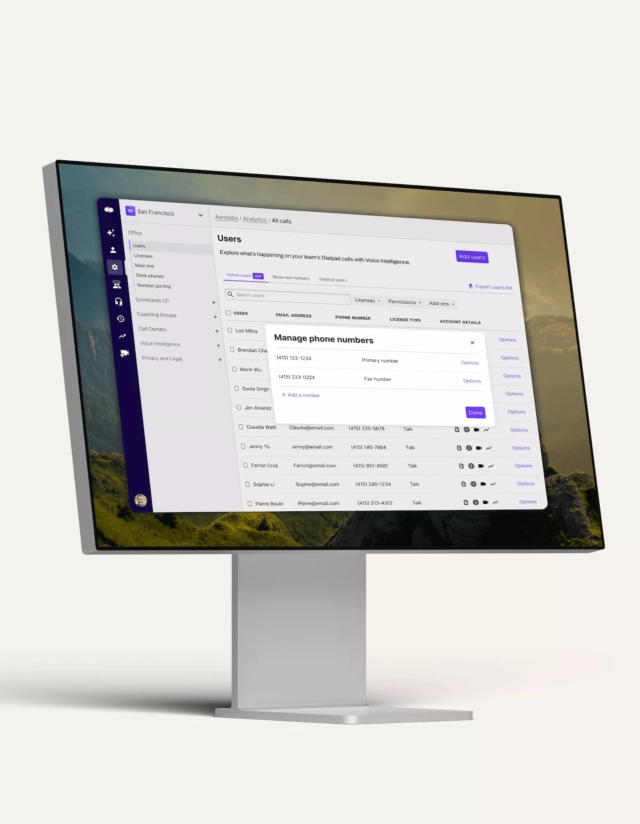
Dialpad offers businesses an all-in-one VoIP system that can also be used as a unified communications platform. It offers everything from voice calls to messaging to video conferencing from a single application.
On the downside, there have been reports of long delays in transferring numbers, even when you follow procedures properly. The system sometimes fails to alert users to a call but then notifies the user that they have missed a call. Occasional lags in call quality is another issue that has been remarked upon by users.
The top tier is most suitable for larger businesses, particularly those that operate globally as it offers 24/7 support, a wide range of integrations (including CRM), and support for local calling in more than 50 countries.
Features:
- Voicemail Transcription: Yes
- Easy setup and admin: Yes
- Software Phone: Yes
- SMS: Yes
- Automatic Call-Back: Yes
- Call Monitoring: Yes
- Live coaching: Yes
- Omnichannel options: Yes
- Call recording: Yes
- Voicemail to Email: Yes
- Call history access: Yes
- Freephone Option: Yes
- High encryption levels and data security: Yes
- Video Conferencing: Yes
- Free version: Trial only
6. 3CX
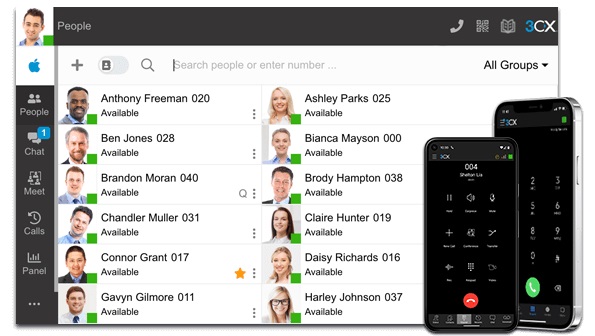
3CX is a VoIP PBX (private branch exchange) solution that also offers video conferencing and live chat features. The main attraction of 3CX is that it is a free VoIP solution for small companies though to larger organisations, although the tiered pricing structure can be a little confusing. That said, if you are a startup or small business operating on a limited budget, this could be a good solution.
Standard plans offer you features such as mobile apps, unlimited extensions, and up to 25 participants in web conferences. Higher tiered plans can increase the number of web conference participants as well as adding features such as Office 365 and integrations like CRM. A major drawback with 3CX is that, beyond some self-service options, you have to pay for direct tech support from 3CX, something that could put many organisations off.
Features:
- Voicemail Transcription: Yes but only at pro or enterprise level
- Easy setup and admin: Yes
- Software Phone: Yes
- SMS: Yes
- Automatic Call-Back: Yes
- Call Monitoring: Yes but only on Windows option
- Omnichannel options: Yes
- Call recording: Yes but only at pro or enterprise level
- Voicemail to Email: Yes
7. Zoiper

Zoiper is another softphone solution that is more aimed at the smaller end of the market and those on restrictive budgets. It is a softphone solution that can be integrated with several SIP-based PBX systems to extend its functionality. Available for Windows, iOS, and Linux, there have been some issues reported with the Linux versions, though crashes are usually short-term and support from Zoiper is good with an efficient helpdesk.
Zoiper falls short in offering too many dialer options, something which can confuse customers. It is also user-profile based which can present issues if more than one user is using the same computer. Some users report issues with screen functionality which they found off putting.
There is no monthly subscription fee; you simply pay a one-off cost when you purchase the software. You can also customise the software so that your own colours, logos, fonts, and so on are used in place of Zoiper’s.
Features:
- Voicemail Transcription: No
- Easy setup and admin: Yes
- Software Phone: Yes
- SMS: Yes but only if offered by provider
- Call Monitoring: Yes but only if offered by provider
- Omnichannel options: Yes when integrated with specific tool
- Call recording: Yes
- Voicemail to Email: Yes when integrated with specific tool
8. Skype (for business)
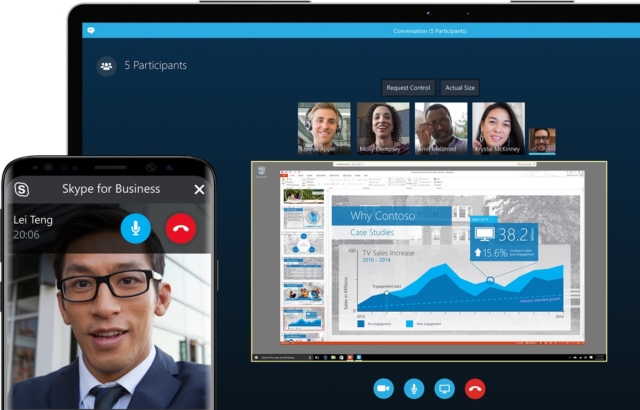
Having been around since 2003, Skype is one of the old guard when it comes to VoIP solutions. However, it has been largely superseded by some of the newer solutions that have emerged and has not kept up with some of the developments and innovations other solutions offer. That said, it remains a popular choice for many and works well when used in a hybrid hosting situation where data is hosted both on premises and in the cloud.
One of the biggest issues with Skype is call quality, especially with video calls or conferences. Another area where Skype falls short is integration of useful tools and file sharing can be a bugbear for many users. It does offer robust security that can protect your data well and does integrate with other Microsoft processes if those are the ones you primarily use.
Features:
- Voicemail Transcription: Yes
- Easy setup and admin: Yes
- Software Phone: Yes
- SMS: Yes
- Call Monitoring: Yes
- Omnichannel options: Yes when integrated with specific tools
- Call recording: Yes
- Voicemail to Email: Yes
9. Ekiga
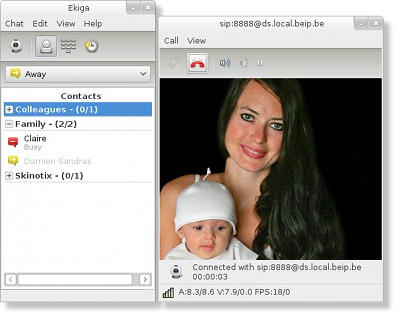
Ekiga is open source and offers users softphone, messaging, and video conferencing options via the internet. Ekiga uses the two main telephony standards (SIP and H.323) meaning it is interoperable with most major service providers. It supports audio calls with HD sound quality as well as video calls to the standards of DVD quality.
It should be noted that Ekiga is designed for the Linux desktop so many potential users will not consider it on that basis. Another major issue is Ekiga’s appearance which appears stuck in the early 2000s and will not appeal to modern, forward-looking businesses. While Ekiga is free, something that would normally appeal to organisations on a budget, there are better free business VoIP options out there so this is a solution that will appeal more to residential users.
Features:
- Voicemail Transcription: No
- Easy setup and admin: Yes
- Software Phone: Yes
- SMS: Yes
- Call Monitoring: No
- Omnichannel options: No
- Call recording: No
- Voicemail to Email: No
10. Jitsi

The first thing to note is that Jitsi is a subsidiary of 8×8, a major player on the VoIP market, so you know from the start that their free version is going to be of a decent quality. Jitsi is both simple and easy to use and you can hold a multi-participant video call without having to sign up to an account. It’s also worth noting that Jitsi is free forever and that means it is attractive to sole entrepreneurs, small businesses, and startups.
However, the messaging area lacks vital resources such as file-sharing, something vital to many people. The system does not let you know if your video is displaying properly and phones can occasionally heat up due to using a lot of memory.
There is also the option to use Jitsi on your existing websites or apps. This (designated JaaS – Jitsi as a Service) is also free but you can only have a maximum of 25 active users. Above those 25 users, JaaS will incur costs in a usual tiered system. Jitsi is open-source and can be used as a web app as well as on iOS or Android. One great feature is that there is no cap on meeting length, something unusual in a free product.
Features:
- Voicemail Transcription: Yes
- Easy setup and admin: Yes
- Software Phone: Yes
- Integration: Yes
- SMS: Yes
- Call Monitoring: Yes
- Omnichannel options: Yes
- Call recording: Yes
- Voicemail to Email: Yes
11. MicroSIP
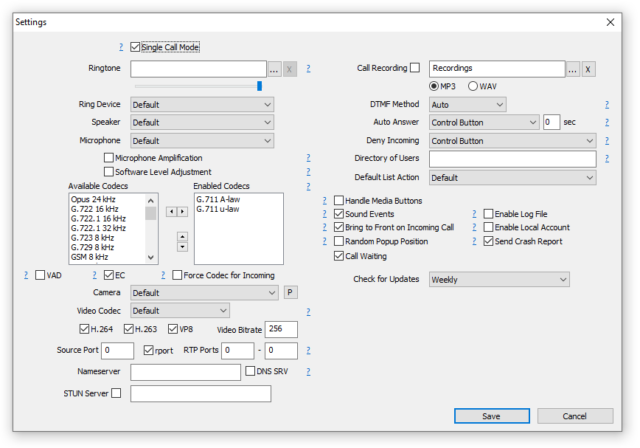
MicroSIP is another free service and offers users a portable SIP trunking softphone solution that is based on the PJSIP stack (on Microsoft Windows only). It provides users with the ability to make high quality VoIP calls either P2P or via a regular telephone. While it can integrate with your existing internal phone system, the interface can feel clunky at times.
However, as a free solution, it can be a good choice if you have team members working remotely on a short-term basis. If you need VoIP over a longer term, or permanently, you may want to consider a more robust solution. It’s easy to set up and use and, if you can overcome the clunkiness, it may be a good solution for solo workers or for people working on tighter budgets.
Features:
- Voicemail Transcription: No
- Easy setup and admin: Yes
- Software Phone: Yes
- Integration: Yes
- SMS: Yes
- Call Monitoring: No
- Omnichannel options: No
- Call recording: Yes
- Voicemail to Email: No
12. Viber (for business)
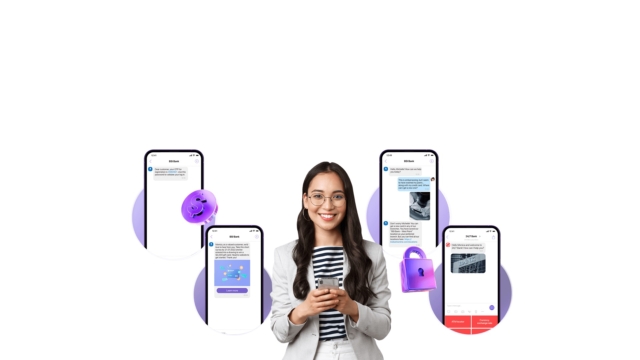
Viber is an instantly recognisable name, though one most people would associate with personal rather than business use. However, Viber for Business is an efficient VoIP solution that is available in more than 190 countries. One of its main features is end-to-end encryption, meaning you can transfer any sort of data, from files to videos, with the confidence that it has high levels of security.
While Viber offers high-quality video and audio calls, that quality is very much dependent on a strong and stable internet signal, and users notice a marked deterioration when the signal is weak. Installation and use of Viber for Business is nominally free but you will pay for the business messages and calls you make.
Features:
- Voicemail Transcription: No
- Easy setup and admin: Yes
- Software Phone: Yes
- Integration: Yes
- SMS: Yes
- Call Monitoring: No
- Omnichannel options: Yes
- Call recording: Yes
- Voicemail to Email: No
13. Nextiva
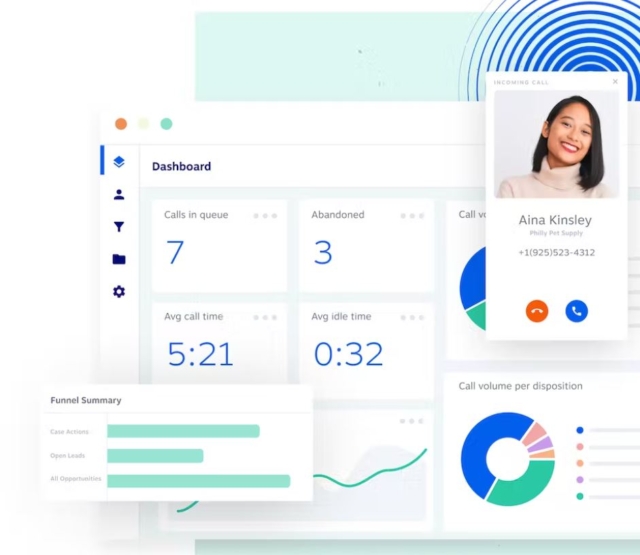
Nextiva is a fairly recognisable name that again offers a unified communications solution although the majority of their customers are small to medium organisations. It offers users voice calls, video conferencing options, team chat channels, and tools for online collaboration. Two of Nextiva’s standout features are a 99.999% uptime record and 24/7 customer support provision.
As with other solutions, Nextiva offers tiered pricing to suit your needs and budget but the business phone plans include more than 45 features that businesses will find useful. You can also migrate your current number at no extra cost. Nextiva has its own CRM that is as good as most options on the market and they also have a more focused CRM-like tool called Call Pop that instantly shows a customer’s essential info when they call.
While all that sounds good, Nextiva falls short when it comes to call quality and users have reported dropped and missed calls due to issues with both the app and the online platform. Logging onto the online platform can be problematic at times and it’s been further reported that many calls have background static.
Features:
- Voicemail Transcription: Yes (needs to be enabled by Nextiva support).
- Easy setup and admin: Yes
- Software Phone: Yes
- Integration: Yes
- SMS: Yes
- Call Monitoring: Yes
- Omnichannel options: Yes
- Call recording: Yes
- Voicemail to Email: Yes
14. Grasshopper
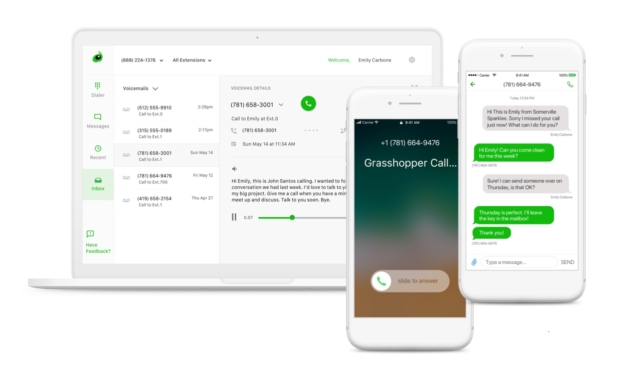
The first thing to highlight is that Grasshopper is (currently) only available in the USA and Canada so has a rather narrow (albeit large in terms of potential customers) market. It’s another solution more aimed at small businesses, startups, and entrepreneurs, and it markets itself as the number one choice of businesses in those categories.
As such, it offers a simple setup process (just download the app and you’re ready to go) as well as pricing plans that recognise those smaller businesses often have very tight budgets. However, that narrower focus comes at the cost of features larger businesses would expect so be sure to double-check that Grasshopper can meet your needs before committing. The most obvious omission is that Grasshopper does not offer video conferencing.
Features:
- Voicemail Transcription: Yes
- Easy setup and admin: Yes
- Software Phone: Yes
- Integration: Yes (so can integrate video services such as Skype)
- SMS: Yes
- Call Monitoring: No
- Omnichannel options: No (though can integrate omnichannel tools)
- Call recording: No
- Voicemail to Email: Yes
15. GoToConnect
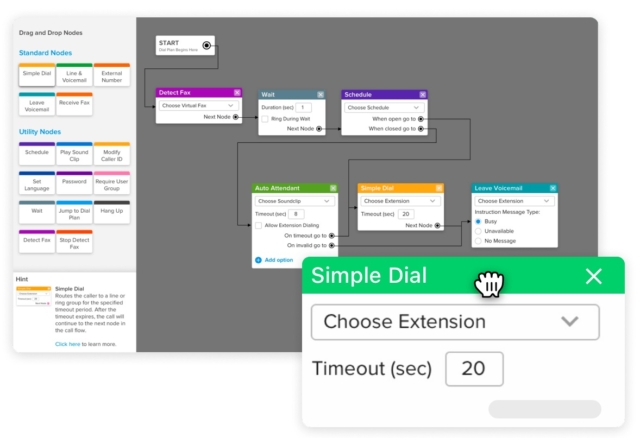
Formerly known as Jive, GoToConnect is a solution that combines a cloud-based VoIP system with the web and video options offered by GoToMeeting to offer a simple but flexible communications platform. Customers can use GoToConnect via their web browser, desktop app, or via a desk phone, offering flexibility and ease of use.
However, users report that initial setup can be difficult and that customer service provision is inconsistent, prompting many to jump ship. Some users also report frequent crashes and errors. It does offer fairly low priced plans so businesses need to consider if the pros outweigh the cons.
Features:
- Voicemail Transcription: Yes
- Easy setup and admin: No
- Software Phone: Yes
- Integration: Yes
- SMS: Yes
- Call Monitoring: Yes
- Omnichannel options: Yes
- Call recording: Yes
- Voicemail to Email: Yes
16. Vonage
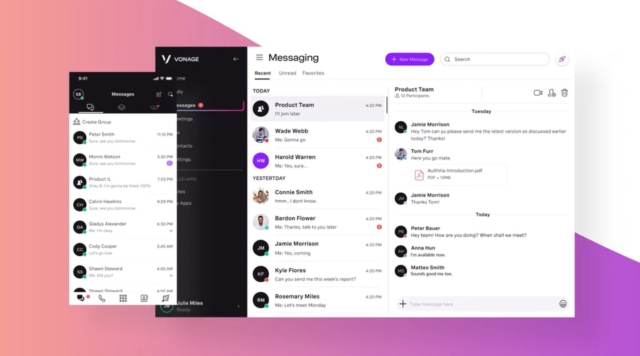
Another well-known name, Vonage appeals to many users because of how it adds mobile apps to its platform that helps turn your handset into a virtual phone extension, thus increasing functionality while not using up any minutes on your mobile plan. One major drawback is that Vonage tends to be costlier than its main competitors, including RingCentral.
It does offer high-quality calls, however, but only offers Android and iOs apps, so users who depend on Windows will probably want to look elsewhere. It does offer good customer service though, with speedy responses to queries 24/7. Vonage offers a good alternative to a traditional landline but if you have more complex business needs, it may not be for you.
Features:
- Voicemail Transcription: Yes (add-on feature)
- Easy setup and admin: Yes
- Software Phone: Yes
- Integration: Yes
- SMS: Yes
- Call Monitoring: Yes
- Omnichannel options: Yes
- Call recording: Yes
- Voicemail to Email: Yes
17. Asterisk
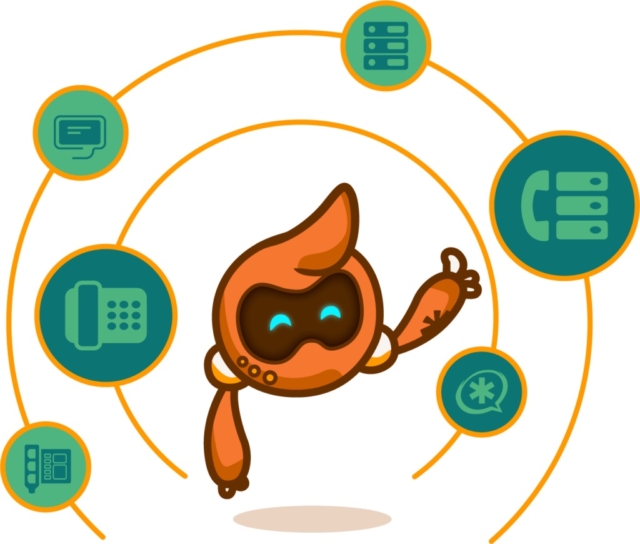
Asterisk is more of a toolkit rather than a fully-ready unified solution. As an open-source solution you can build a custom system that powers VoIP gateways, conference servers, and IP PBX systems so that you can add the features and functions you need. Users are diverse and include SMEs, contact centres, as well as enterprise-level organisations.
However, users report frequent security issues as well as the fact that documentation is sparse, meaning that users can often struggle to deal with issues. Unless you have great IT staff or developers, you may find it difficult to configure the system to your needs. This makes it a useful system for businesses that have ‘experts’ in-house, but would likely need external hires to make it work if not.
Features:
- Voicemail Transcription: No
- Easy setup and admin: No
- Software Phone: Yes
- Integration: Yes
- SMS: Yes
- Call Monitoring: Yes but needs work or add-on
- Omnichannel options: Yes with integration
- Call recording: Yes with integration
- Voicemail to Email: Yes with configuration to use ssmtp.
18. Microsoft Teams
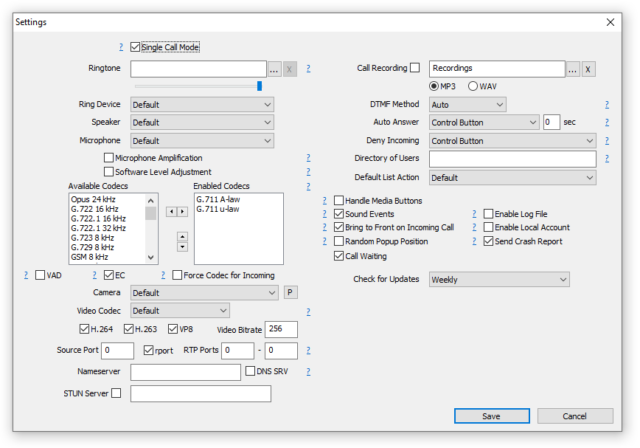
As you would expect from an offering from a tech behemoth, Microsoft Teams offers a wide range of features and functionalities to meet the needs of modern businesses. Microsoft Teams brings all your apps together in one place, negating the need to switch between apps when wanting to use different functions at the same time.
You may already be using some Microsoft tools in your business, and Microsoft Teams offers integrations with Microsoft’s own suite of tools and also with many other non-Microsoft products/tools you may be already using. Another major feature of Microsoft Teams is that pricing is extremely competitive.
Yet despite being such a major name, Microsoft Teams suffers from a number of major issues. There is no unified search function, the system often does not provide sufficient notifications, the file storage structure is confusing, and the online meeting options and quality falls way short of most of its competitors.
Features:
- Voicemail Transcription: Yes
- Easy setup and admin: Yes
- Software Phone: Yes
- Integration: Yes
- SMS: Yes
- Call Monitoring: Yes
- Omnichannel options: Yes
- Call recording: Yes
- Voicemail to Email: Yes
The takeaway
As you can see, the choice of VoIP providers is not only vast, but very diverse in the features they offer and the businesses they target. If you are in the market for your first (or new) VoIP service, it can often seem that making a choice will be a long and at times confusing path. It doesn’t need to be that way, however, and this guide may help make any choice easier.
The first thing to consider is what size of business you are. Are you a solo entrepreneur, a small business, a startup, or a medium to enterprise-level organisation? Size does matter in this case as the size of your business will usually dictate how large a budget you have and how carefully you are counting pennies. But tied to that budget is the idea of scalability; you want your business to grow and expand and, ideally, you want a communications system that grows with you.
The next thing to consider is your needs. How many phone lines do you need? Do you need video conferencing features? Do you operate a call centre and need advanced features such as call routing, IVR, ACD, and so on. It will help at this stage to make a list of what your priority needs are in day-to-day business so you can further narrow down your shortlist according to the relevant features.
Once you have a shorter list of potential providers, you can start looking more into details, comparing pricing plans, and reading independent online reviews and the recommendations (or not) of previous and current customers. You may also want to look at which providers on your shortlist offer free trials so that you can actually see the system in action.
It’s not an easy process, especially for a larger enterprise that may be looking to spend thousands of pounds over the lifetime of any contract or subscription. But the other side of that is that you are investing in your business and how you communicate with customers and suppliers so you want to be sure that when you do make a decision, it’s the right one.
Originally published Aug 22, 2022, updated Jun 26, 2024

